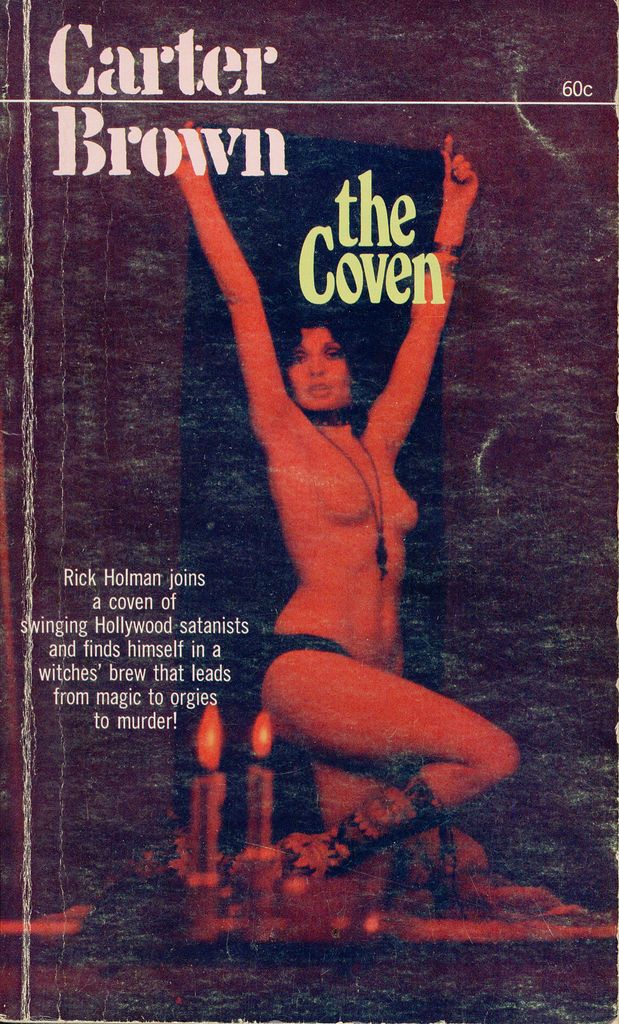 James M. Cain’s three seminal works of crime: The PostmanAlways Rings Twice (1934), Mildred Pierce (1941), and Double Indemnity (1943) seem to over shadow
the majority of his bibliography. One can argue after producing these works
that all his other works are superfluous, and that the genre requires no other
work. However, like any great crafts-man who continues to shape his or her art
their output continues with a body of work that has its own set of highs and
lows. Nineteen sixty-five’s The Magician’s Wife doesn’t necessarily have the
same punch as Cain’s earlier work, but it does display a master genre writer using
his talents to produce an entertaining piece of work.
James M. Cain’s three seminal works of crime: The PostmanAlways Rings Twice (1934), Mildred Pierce (1941), and Double Indemnity (1943) seem to over shadow
the majority of his bibliography. One can argue after producing these works
that all his other works are superfluous, and that the genre requires no other
work. However, like any great crafts-man who continues to shape his or her art
their output continues with a body of work that has its own set of highs and
lows. Nineteen sixty-five’s The Magician’s Wife doesn’t necessarily have the
same punch as Cain’s earlier work, but it does display a master genre writer using
his talents to produce an entertaining piece of work.
Clay Lockwood sells meat. He’s a lonely man traveling up the
corporate ladder while making the rounds of the major hotel food and beverage restaurants.
His life is a bit like his work: cold, organized, and in need of possessions to
fill his empty locker of a heart. On a whim, Lockwood flirts with a waitress at
one of his stops only to find, embarrassingly, that she is a married woman. That’s
where things should have stopped; however, Sally Alexis has an ulterior motive.
Sally’s married to the local attraction, the Great Alec Alexis, who performs
his magic show in residency at the local hotel’s theater. Once her husband’s
on-stage assistant, her boss has now demoted Sally to mom, caregiver, and
waitress.
Getting in touch with Clay a few days later, Sally sets up a
date and they meet in secret. Instantly a connection is made and a romance
blossoms. Sally reveals that her marriage is cold and lifeless and that she is
merely biding her time so that her son can inherit her father-in-law’s fortune.
Admittedly, her father-in-law’s death of natural causes could take a long time
in addition to the fact that any inheritance her son would receive would be set
up in a trust fund and unavailable until he’s of legal age.
Clay requests Sally to leave her husband and come marry him
and she rejects his numerous proposals. She feels it would not be sensible to
remove her child away from his wealthy heritage. Although shocked at the news
of her child Clay remains sincere, his new job promotion will provide for them
all. However, Sally suggests a work around involving accidents and life insurance
with her husband. Clay immediately gets the insinuation and backs off, and by
no means does he want to get involved with Sally’s implied workaround. He sends
Sally on her way.
True to the melodrama aspect of Cain’s writing, additional wrinkles
form in the structure. Sally’s mother, Grace, comes to Clay to encourage him to
take her daughter away from her lifeless marriage. Reluctantly, Clay agrees to
help Sally, but without the implied work around and will attempt to persuade
her again to leave her husband and marry him. Unfortunately, Clay’s repeated
attempts to persuade Sally to divorce without violence fail. Sally becomes
childish and unpredictable pushing Clay towards a relationship with Grace. As
with most good noir, there’s a love triangle.
Things start to cook up when Clay finally steps over the
edge to commit murder for Sally. After meeting her husband by a chance at his
own office, Clay gets a sense of The Great Alex’s personality: brash,
egotistical, and demeaning towards woman. It is enough to make the invisible
wires snap for Clay. The plot takes a left turn and becomes sinister. Clay’s
torn between the two women and their moral stances on human life. Not only does
Sally participate fully in the plans of her husband’s accidental death, her
mother is also able to turn the check and ignore the act of murder with her silence.
The murder plan is the most exciting aspect and helps
levitate this novel firmly into the crime genre and high above a melodrama love
triangle. The meticulous planning of the accidental death involves stalking the
Great Alexis’s habits before and after the show, tailing him home sans
headlights down a deserted road, and eventually trial runs of the forced car
crash that’s about to ensue. Cain’s suspense is terrific and reminiscent of the
best filmic sequences of Hitchcock, Jules Dassin, or Jean-Pierre Melville. Admittedly,
the set up takes time to formulate using ingredients from each of his greater
works in a stew. Once that pot is simmering, the pace doesn’t slow down for the
rest of the book.
The real magician of the story is not The Great Alec Alexis,
although he performs and takes credit as one. Sally works her magic well
manipulating Clay to murder, but never succeeds at pulling off the final act or
the Prestige. If the reader wants to know the true magician of the story then
he or she need look no further than the author, James M. Cain.













